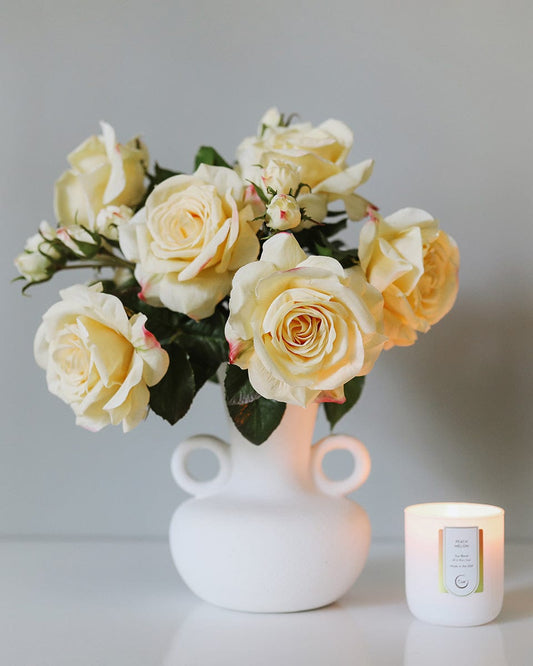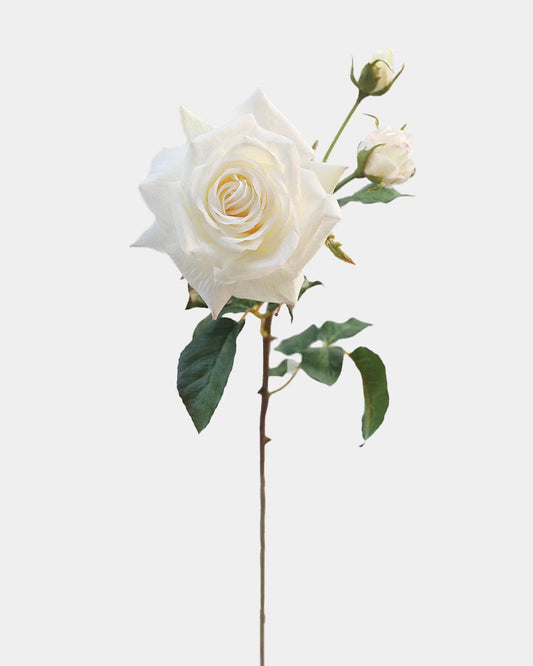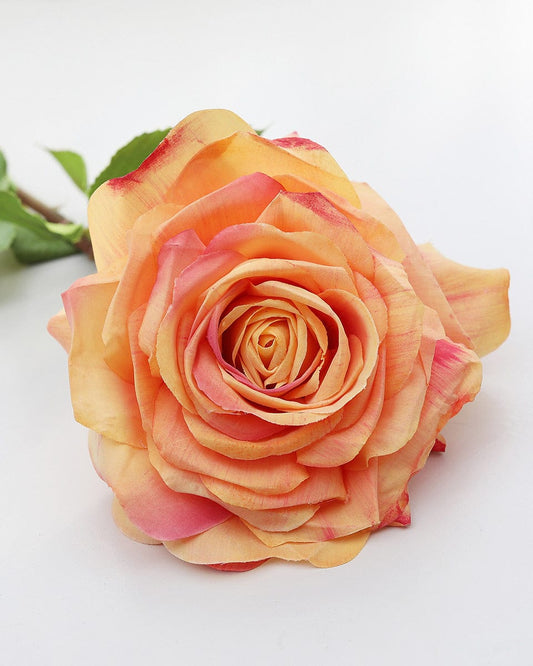Fall Wedding Flowers: Using Fake Roses That Won't Wilt

Been testing a new satin‑matte polymer on rose petals for two weeks and it’s doing something odd in autumn light. It knocks back glare without killing depth. Maybe too matte? I’m still not sure. When the temperature dips and humidity shifts, these petals behave differently—almost like real ones trying to hold their posture.
Fresh roses in October want to fold into themselves. Short days, travel stress, hydration drama. And costs jump because freight and storage get tricky. I love the scent of real blooms, I do, but I’m not paying peak season pricing just to watch a bouquet look tired by cocktail hour. That’s the blunt truth.
Here’s where I land for fall weddings: controlled color, believable texture, zero wilting. And yes—fake. Or call them faux roses if that feels nicer. The point is consistency you can actually plan around.
Key Takeaways
- In fall light, matte textures and mid‑warm hues read truest on camera.
- Shape sells the illusion; leave negative space and vary heights/angles.
- Repeat 2–3 tones across bouquets and tables for cohesion without fuss.
- Faux wins in October on cost, color control, and stamina—no wilting.
Choosing Colors for Fall Light
Autumn light exaggerates edges. It warms everything, which is wonderful until a rose reads too orange during a 5:30 ceremony. I keep saying I’ll standardize a palette, but I always end up chasing micro‑shifts—is this peach leaning apricot or blush? Wait, I meant coral—no, still peach. The camera is unforgiving.
That satin‑matte I mentioned helps, but you still need the right base tone. Mid peaches and soft yellows do serious heavy lifting in October because they don’t fight the ambient warmth. And they play nicely with deeper textures—velvet ribbons, aged brass, walnut tables—without disappearing.
I was working on a bridesmaid bundle and needed an open bloom that didn’t scream spring. Grabbed the Large Pink Dutchess because the pink sits right on that edge between shell and blush—safe territory under amber string lights.


Large Pink Dutchess Rose 20"
I pinched three outer petals, creased the edge, dusted a whisper of cornstarch—suddenly the bloom read like it had been cut that morning. No shine bounce, even under tungsten.
After that, I tested a peach because too much pink can turn saccharine against terracotta dresses (which everyone seems to love right now). The peach sat warmer without arguing with the palette—think candle glow rather than sherbet.


Real Touch Prestige Peach Rose 22"
Bent the neck twice to get that natural “reach toward the aisle” look. The wire held without springing back, which saves me floral tape and patience.
If you’re new to this, here’s a rabbit hole you can safely fall into: shaping. Most people overfill bouquets when the real trick is negative space. Let a few faces breathe, tilt, misbehave a little. That’s where the realism hides. When in doubt, skim a page of artificial roses that look real and notice how the petals take light—tells you more than any description.
Take a blow dryer on low, warm (not hot) air from 12–14 inches away, and nudge the very edges of faux rose petals. They soften just enough to hold a gentle crimp. Stop the second you see any sheen; that’s the material protesting.
What Wilting Taught Me About Structure
Real roses slump from the head down, which ruins ribbon lines and makes boutonnières look sad. I pre‑empt that with internal scaffolding even on fakes because it keeps the silhouette consistent in photos—especially the wide group shots when the photographer steps back and every flaw shouts.
I reached for a soft yellow next because yellow is risky in fall—too bright and it looks spring; too muted and it goes stale. This one reads like late‑afternoon window light, which is exactly what I needed for a mixed‑cluster bouquet at an October wedding.


Real Touch Prestige Soft Yellow Rose 22"
Twisted the secondary bud outward and the arrangement finally had movement. Leaf sheen toned down with a tiny cornstarch brush—no chalky residue.
By the way, if you’ve ever been told “fresh or nothing,” I disagree—especially in October. Farms prioritize dahlias and mums; roses just aren’t stocked in every shade. If you do find the exact tone, you’re paying for it, and it may not travel well. Meanwhile real touch roses shrug off heat lamps, dry rooms, and 200 hugs.
Pre‑crimp bouquet stems into a gentle S‑curve before you tie off. It reads more organic in photos and prevents that rigid “lollipop” profile. One subtle bend at the shoulder, a counter bend a third down—done.
Bouquets vs Tables—Different Rules
Hand‑tied bouquets need flex and negative space; tables want stability and repeatability. I build two spines for bouquets: a primary line (tall to short) and a counter‑curve that’s two‑thirds the height. For tables, I keep stems shorter, faces a touch more open, and color repeats tighter so the candlelight reads coherent, not noisy.
For aisle markers, the peach‑pink Dutchess has been a reliable bridge between neutral linens and deeper napkins. Small things steer the whole mood.


Peach Pink Dutchess Real Touch Rose 20"
Trimmed the stem to 15" and it behaved—no weird wire memory. Petal color stayed peach under votives, didn’t drift into orange.
And for tables that need a little heat without shouting, I nudge toward sunset tones. Not full burnt orange—just that in‑between that feels like late light on a wall.


Real Touch Prestige Sunset Rose 22"
Dropped a pair into a bud‑vase trio and the whole table warmed up. The color shifts pink‑to‑orange as you move—very forgiving in candlelight.
If your venue is north‑facing or your ceremony is late, the cooler light can make whites go icy. That’s where I lean on blush‑peach families and let the light do the rest. If you’re still undecided, browse a grid of realistic roses and look for petal edges that aren’t too perfect.
Budget and Availability (Or, Why I Stopped Playing Rose Roulette)
Here’s the part no one says aloud: in fall, farms chase volume flowers. Roses are there, just not in every shade. If you do find the exact tone, you pay for it—and it may not love a warm delivery van. I’ve had gorgeous garden roses gasp in transit and then sulk all afternoon. Meanwhile the better best fake roses are steady, and they handle hugs, breeze, and handling without that brittle crack some cheap stems make.
For a bridal bouquet that wanted “warm but not orange,” I road‑tested both the peach and the pink. Then I split the difference: one lighter face near the front for glow, a deeper face to anchor the back line. Every angle photographed well.
If you’re still debating, pick two tones you love and repeat them from personals to tables. Repetition reads polished without turning matchy‑matchy. And keep one or two heads a touch higher than the rest—your photos will thank you.
A slightly spicy note before we end: some fresh rose varieties look plastic in fall lighting. The petals go glassy. Meanwhile, the better artificial roses handle LEDs and flash without that weird reflection. Not always, but often. I’ll take “often” over “maybe” on a wedding day.
Conclusion‑ish
I don’t think faux replaces fresh in every season. But for fall weddings, especially outdoors or under warm lights, the balance tips. Control beats nostalgia. You can still have romance—just skip the stress. Start with a soft pink, add a peach or quiet yellow, and keep everything a little imperfect. That’s where the magic hides.
Frequently Asked Questions
How many stems per bouquet for fall?
For fall roses, 10–14 medium faces plus 3–5 buds gives you a sturdy hand‑tie without the bowling‑ball look. Keep one or two heads a touch higher and let a couple tilt off‑axis so the camera catches curve, not just circles.
Will guests notice they’re faux?
Most don’t. Texture has gotten very good, and the bigger tell is shape, not material. Overly neat equals fake. Leave negative space, vary heights, and knock the leaf gloss down so nothing reads shiny under warm light.
What color family works best with autumn venues?
Mid peaches, blush‑peaches, and soft yellows play nicest with wood, velvet, and candlelight. If you need depth, add one sunset note rather than jumping straight to burnt orange—it keeps the palette warm without taking over.










